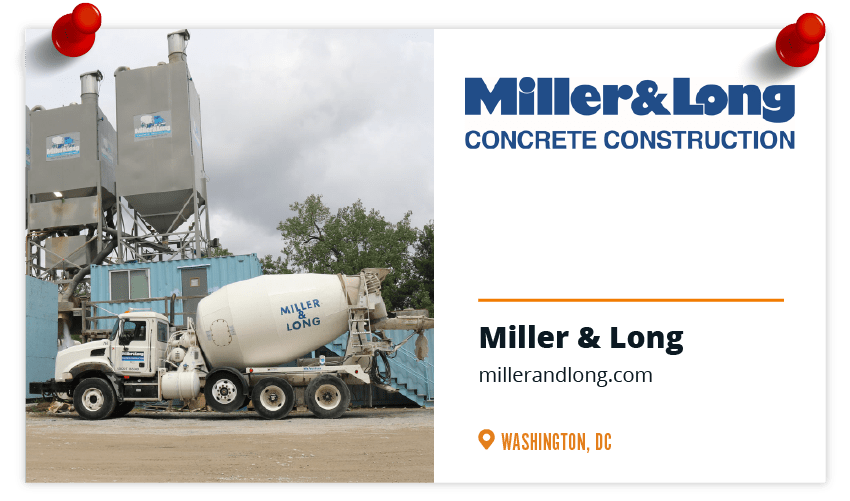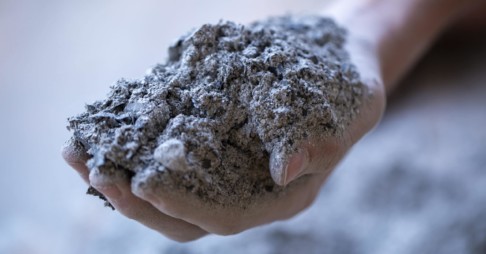Welcome back to our Around the World with CarbonCure series. This month we are visiting Washington, D.C. — home to Miller & Long Co., Inc. — who have been delivering quality concrete to the mid-Atlantic region for 75 years.
Good friends Jack Miller and Jimmy Long started the company in 1947 with just a new Ford truck, a $50 investment in tools, and a three-line newspaper ad. Today, the company is a full-service provider of concrete construction services and produces roughly 50% of the concrete they place in buildings, operating entirely with portable batch plants for that 50% self-produced.
Miller & Long prides themselves on being a good employer and a community leader, a company people want to be a part of. For example, they run an apprenticeship program for high school students and they were one of the first companies in their industry to offer employee health insurance.
“We're a well-established company and are thriving with more than a thousand employees,” said Jim Martinoski, Vice President at Miller & Long. “The vast majority of our skilled craft workforce and leadership have been here for multiple generations and they've been here for multiple decades. When people come here, they stay here."
The company is also a leader in sustainability in their market. “Sustainability is not a nice-to-have thing or a nice story to present. It's become necessary-to-do work and if you're not part of it, you're going to get run over by it. And so we need to either lead it or be part of that story,” said Jim.
Miller & Long’s plants are one of the first portable plants to use CarbonCure’s technology for ready mix. But their commitment to sustainability began before becoming a CarbonCure customer.
The company’s sustainability initiatives include reclaiming and recycling the water they use to make concrete, turning end-of-life lumber into mulch for local landscaping companies, and using renewable energy such as solar to power their plants. Their integrated approach also extends to the concept of value engineering where they look at how to reduce costs but also improve the environmental footprint of buildings.
For example, they offer a lower strength of concrete or help designers use a more efficient footprint to make the build less complex, thereby utilizing less embodied carbon in their building products.
For their first CarbonCure project, they’re using the technology in two portable batch plants with their work on Amazon HQ2.
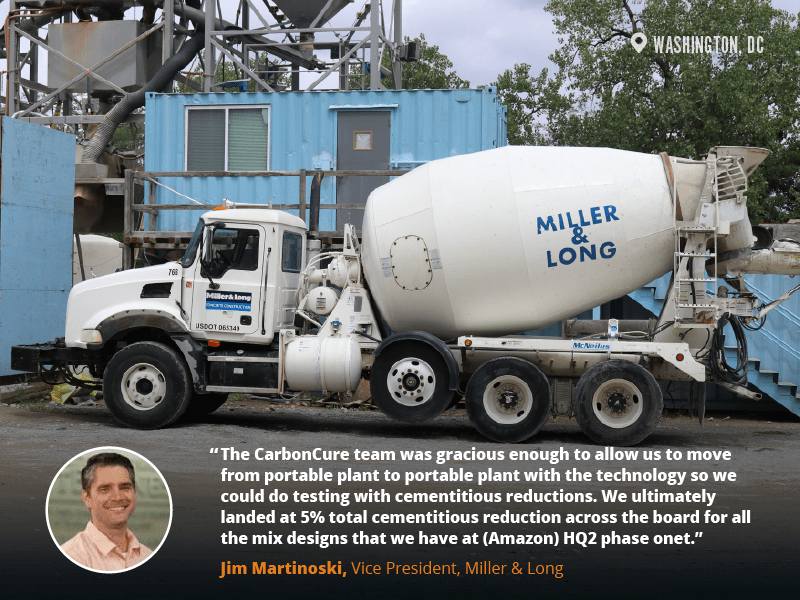
They ran a number of tests with CarbonCure before getting started. “The CarbonCure team was gracious enough to allow us to move from portable plant to portable plant with the technology so we could do testing with cementitious reductions,” said Jim. “We ultimately landed at 5% total cementitious reduction across the board for all the mix designs that we have at HQ2 phase one.”
Installing CarbonCure’s technology into their portable plants was simple and straightforward, explained Jim, and an important next step in their work to lower the carbon footprint of the concrete they produce.
“We know if we don't change with the sustainability initiatives or what the market tells us we need to do, we're going to get run over by it. So, we accept that change, we embrace it, and we move forward with it,” said Jim.
There’s no shortage of fascinating sights to visit in the nation’s capital. Let’s go to Washington!
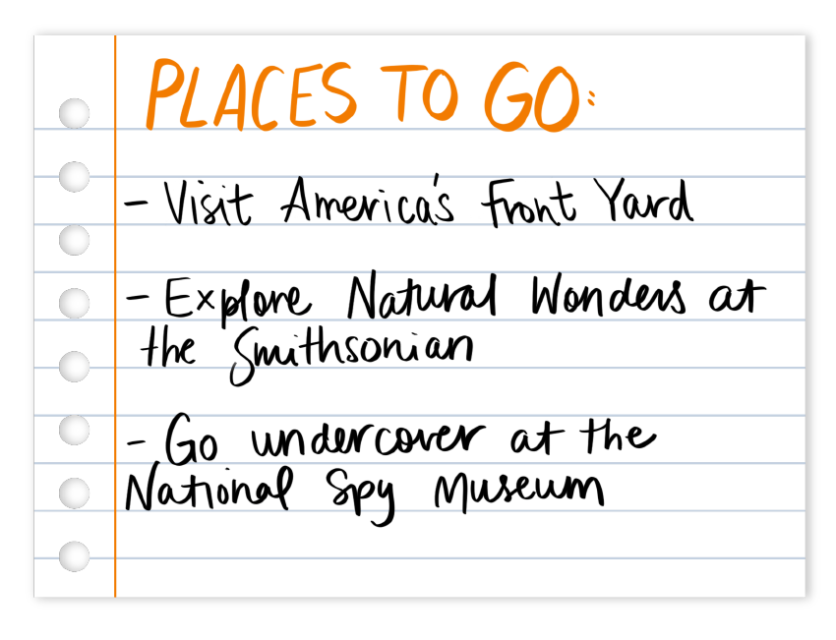
Visit America’s Front Yard
No visit to this capital city would be complete without a stroll around the 2-mile (3.2 kilometer) stretch of green space that’s been nicknamed “America’s front yard.” Surrounded by the U.S. Capitol Building on one end and the Lincoln Memorial on the other, the National Mall is home to important monuments and museums such as the Vietnam Veterans Memorial and the U.S. Holocaust Memorial Museum.
The Mall hosts events of all types – cultural, family, historic and more – and you can always give your legs a break by hopping on a Big Bus Tour to travel between landmarks.
Explore Natural Wonders
The Smithsonian National Museum of Natural History first opened in 1910 and has been wowing visitors ever since. It’s home to over 145 million specimens and cultural artifacts – the largest natural history collection in the world – and admission is free. Don’t miss the dinosaur skeletons, insect zoo and 25-foot-long giant squid.
If natural history isn’t your jam, other Smithsonian museums are close by, such as the National Museum of African Art or the National Air and Space Museum.
Go Undercover
Step into the shoes of a spy at the International Spy Museum, a non-profit museum with the largest collection of espionage artifacts that’ll have you looking suspiciously at seemingly innocent everyday items. You’ll learn about the role of sabotage, secret soldiers and deception, hear first-person accounts from top intelligence officers and experts, and test your espionage skills to see if you have what it takes for the undercover life.
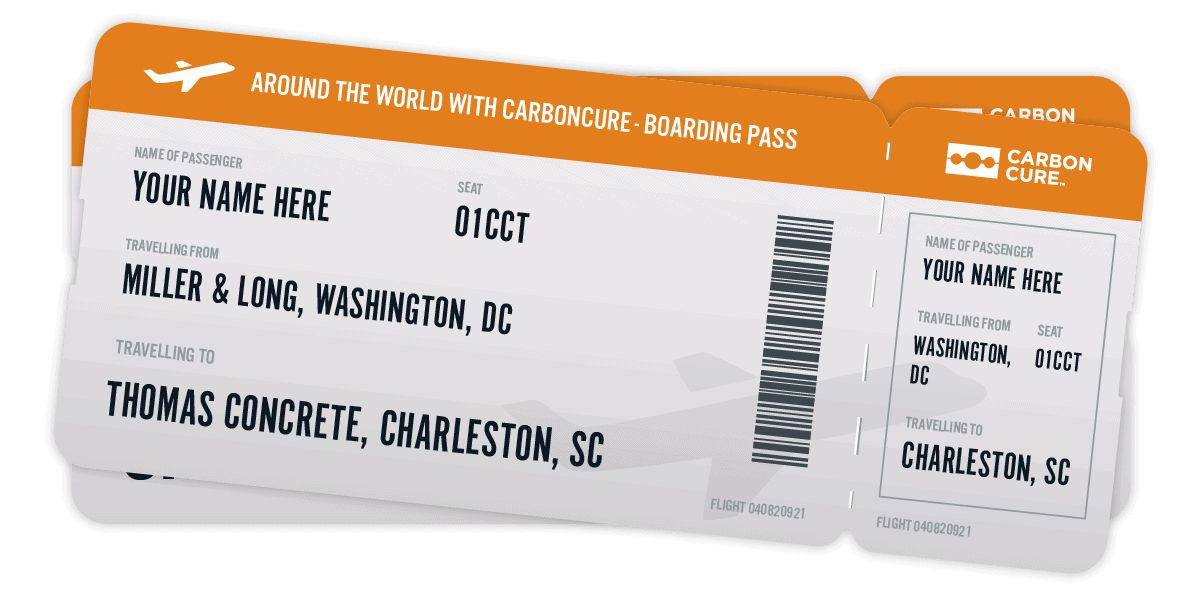
Our Next Stop
Next month we’ll be heading to Charleston, South Carolina to visit long-time partner Thomas Concrete. Make sure to sign up for our blog here so you don’t miss it!
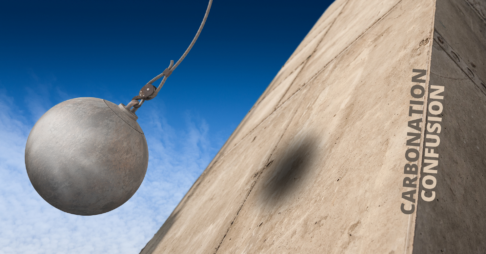
Razing a Common Misunderstanding: Early-Age Carbonation vs. Atmospheric Carbonation in Concrete

